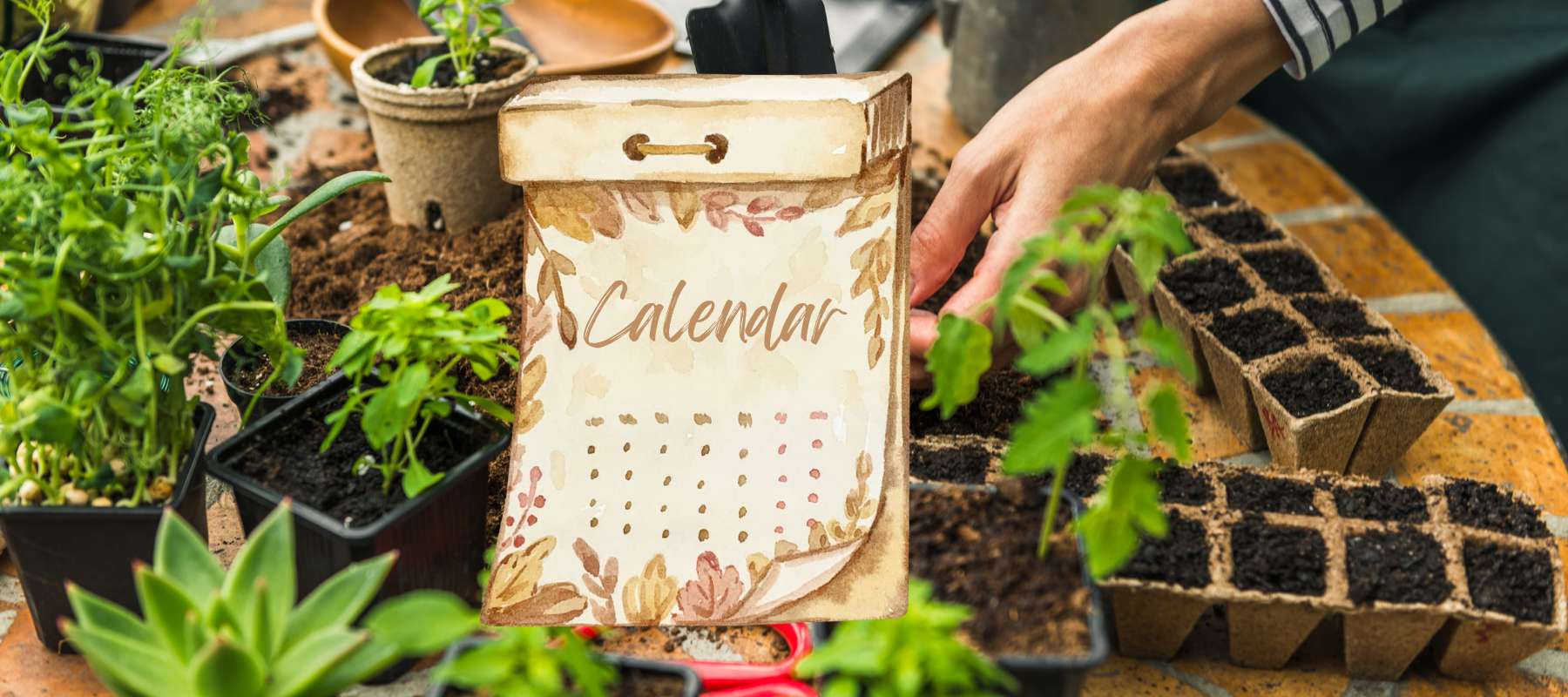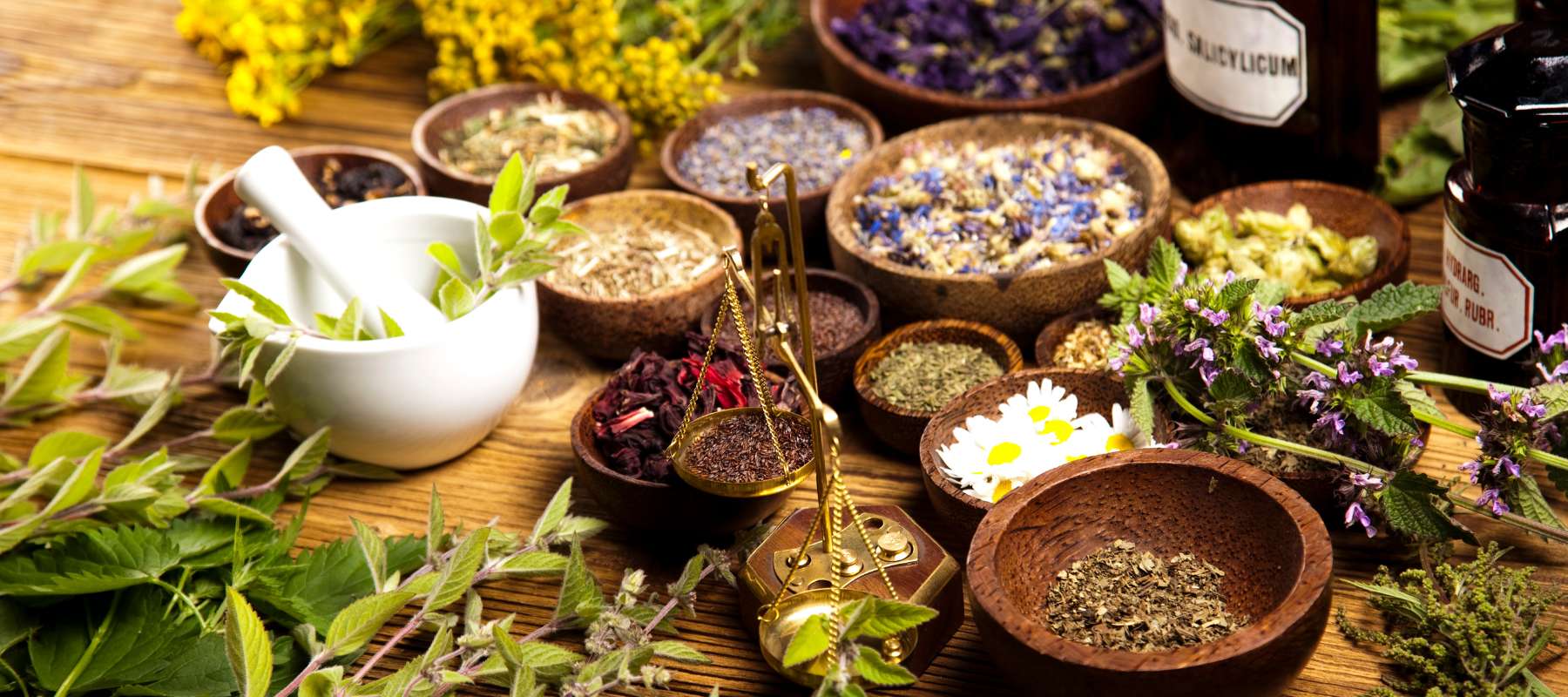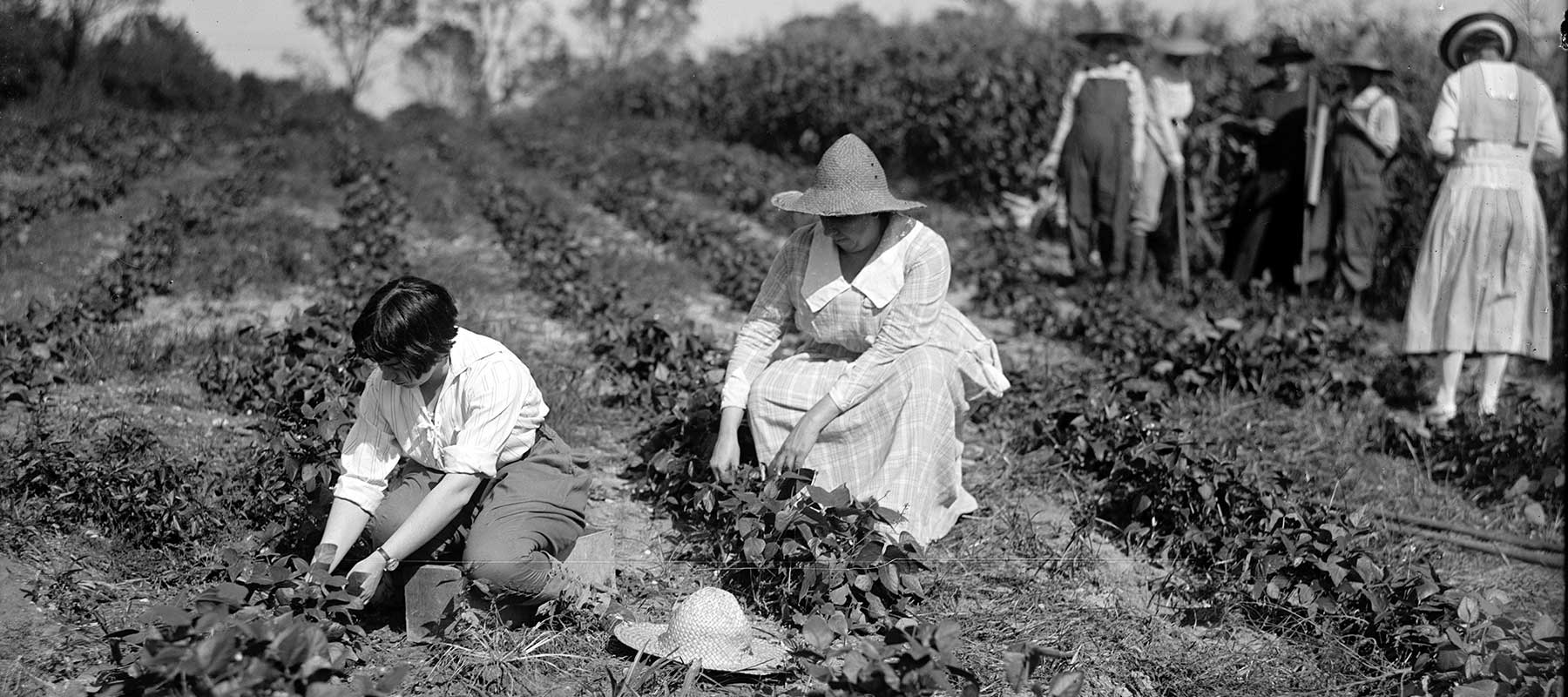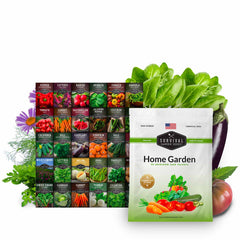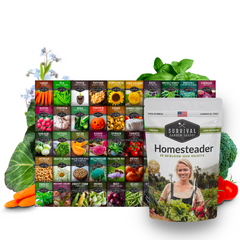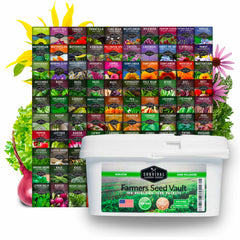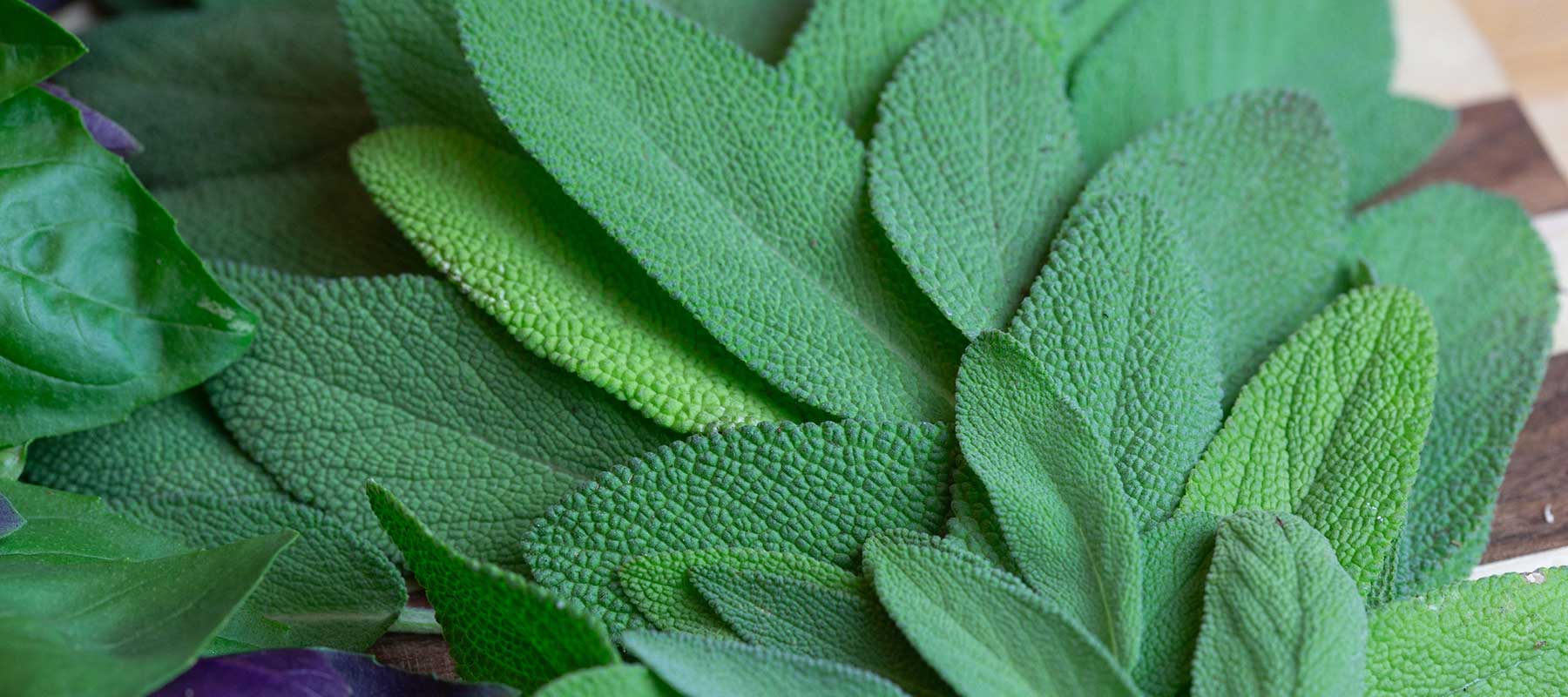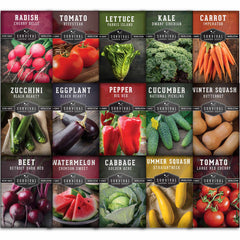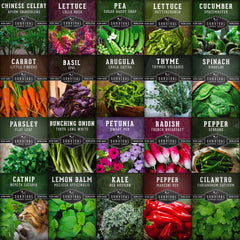Growing up in the Black Belt of Alabama, I have plenty of experience with okra – both growing it and eating it. I’m always surprised to find out many people have never tasted it. To me, it is a vegetable garden staple and one of the quintessential flavors of summer. This quick-growing plant is fairly easy to grow once the soil warms up, and will provide a reliable yield of vegetables through the hottest part of the year when other plants are struggling. As a member of the mallow and hibiscus family, okra produces lovely flowers, too. If you’ve never grown it, it’s worth trying at least once.
Types of Okra
We have three heirloom okra seed varieties to choose from at Survival Garden Seeds. Each variety is reliable and prolific but has its own unique benefits.
Clemson Spineless Okra
Did you guess that this variety was developed at Clemson and has spineless pods? Clemson Spineless Okra was introduced in 1937, and two years later won the All-American Selections award. Today, it is the most widely grown variety due to its exceptional yields of tender green, straight pods. It has a consistent, classic okra flavor and is a versatile choice that works well fried, stewed, or grilled.
Emerald Okra
This heirloom was developed by the Campbell Soup Company as an okra that could maintain its color and texture when cooked. Emerald Okra’s spineless cylindrical pods stay tender at longer lengths and are easy to handle and prepare. It has a richer flavor and is an excellent choice for gumbos and stews.
Red Burgundy Okra
Another All-American Selections winner, Red Burgundy Okra is a stunning plant that can easily double as an ornamental. The burgundy stems, branches, leaf ribs, and pods stand out against the green leaves and cream-colored flowers. It produces an abundance of smooth, tender pods that remain tender up to 6 inches with a slightly sweeter flavor. Thanks to its vibrant color, it’s a popular choice for pickling.
Planting Okra Seeds
Overnight soaking and seed scarification will improve okra’s germination rate. To scarify your seeds, simply nick, scratch, sand, or otherwise damage the tough outer seed coating, taking care not to damage the baby plant within. You can use sandpaper, a file, a knife, or nail clippers.
As a hot weather plant, okra is very sensitive to the cold, and its seeds require warmth to germinate. This means that for direct sowing, the soil and overnight temperatures should be at least 65°F, but even warmer is better. For this reason, many gardeners like to start okra indoors three or four weeks ahead of time so they can get a jump on the growing season. If you choose to start your okra indoors, a warming mat can provide the necessary heat. Keep the seeds uniformly moist until they germinate.
For the final growing area, choose a very sunny spot with well-draining soil rich in organic matter. Space your plants 12-18 inches apart after the outdoor temperatures are suitable. As okra develops a taproot, seedlings should be handled with utmost care to prevent transplant shock. Planting in peat pots or biodegradable seed starting containers can help you avoid disturbing those delicate tender roots. If you need to thin seedlings, do not pull the extra plants as this can damage the roots of the plants you want to keep. Thin by cutting seedlings at the ground level with sharp scissors.
Growing Okra Plants

Understanding how okra grows and what to expect will help you succeed at growing this summer vegetable. The okra plant often grows slowly at first, then suddenly takes off. They can reach 4 to 6 feet or taller, depending on the variety and your growing conditions. Pruning your plants once they reach this level will encourage more side shoots, which makes harvesting much easier.
Okra is self-pollinating and doesn’t need insects to produce fruit. However, pollinators love the large showy flowers and will cross-pollinate varieties, so if you want to collect seeds, be aware you may need to isolate your plants if you want your seeds to breed true. You can also selectively bag flowers to prevent cross-pollination.
Okra Watering Needs
Okra is generally drought-tolerant and can handle brief dry spells much better than most other vegetables. It can also withstand humidity quite well. For the best yields, your plants should receive at least an inch of water a week, so water accordingly. Keep the soil moist but never waterlogged. Mulch can help you to retain soil moisture while also discouraging weed competition.
Okra Pests & Diseases
Promote good air circulation to prevent diseases and be proactive about pest management. The pests and diseases that affect okra are generally manageable with good garden maintenance. Aphids, armyworms, Japanese beetles, corn earworms, and cucumber beetles can all be hand-picked or knocked off. In southern states, they can also be affected by root-knot nematodes, so we recommend interplanting with marigolds. Okra plants that have been stressed by cold are susceptible to fusarium wilt and verticillium wilt, which brings me to the next topic – growing in cooler zones.
Growing Okra in Cooler Climates
My experience with okra has been ideal because the plants grow best in the warmth of USDA Zones 8-11. If you’re outside of this region, don’t lose heart! With some TLC, okra can be successfully grown even in Zone 4, thanks to its quick maturity rate. Red Burgundy is the fastest of our three varieties at about 50-55 days, but the other two are also quite fast, averaging around 55-60 days.
You can extend the growing season by starting your seeds indoors early or you can wait until the soil is ready for direct sowing. Either way, don’t be tempted to rush nature! You’ve got time. Cold weather is the kiss of death for okra, so be patient and find (or create) a warm microclimate for your plants.
Okra prefers daytime temperatures of at least 85°F and nightly temperatures of at least 60°F. To find that, look for a south-facing location that gets long hours of sunlight. You can use black plastic mulch to cover the planting area and trap heat. Row covers can also help you warm the soil ahead of time as you wait for the heat of summer. At the end of the season, consider using cold frames or erecting a hoop house to provide additional warmth and protection during cooler nights.
Harvesting Okra

I hated picking okra so much as a child because I would come inside with welts all over my arms. Some people are very susceptible to the scratchiness of the leaves, and I’m one of them, but no one else in my family seems to have the same problem. As a result, no one ever told me the secret to avoiding this problem, but it’s really quite simple: harvest okra early in the day so you can wear long sleeves and gloves while you do it. Yes, it’s hot outside in late summer and early fall, but it’s worth it to me.
Once your okra has started producing, keep on top of harvesting. Ideally, you should pick pods once they are the length of your finger – no longer than 4 to 6 inches. This way, you’ll get the best flavor and texture, as long okra pods can become extremely tough and woody. Although both Red Burgundy and Emerald Okra’s pods can get a little longer than that without becoming tough, it’s better to err on the side of caution and pick a little early. If a pod does get too big, go ahead and harvest it so that the plant doesn’t focus all its energy on maturing the seeds within. In the heat of the Alabama sun, those pods would explode in size and we sometimes had to harvest twice daily. We had plenty of okra to eat fresh and store for later.
Enjoying Your Okra Harvest
Okra inspires strong opinions, largely due to its slimy texture when cooked. My husband hates it but he’ll make an exception for gumbo, where that gooiness helps thicken the soup and hold it together. My favorite way to eat okra is chopped, battered in cornmeal, and fried – preferably the same day it was picked. I am also a fan of pickled okra, which is a great way to store it long-term. It’s a popular ingredient in various Latin American, African, and South Asian dishes.
Okra has other uses, too, a few of which I’ve never tried. It’s a versatile plant that’s perfect for any survival garden. Young okra leaves can be used in salads or cooked similarly to any bitter green leafy vegetable. Okra seeds can also be roasted and ground as a caffeine-free coffee substitute.
Growing okra in your garden can be a rewarding experience, even if you’re new to this particular vegetable. This plant is perfectly adapted to the hot, challenging conditions of Southern summers, thriving when other plants struggle. Although it’s a tropical plant, okra matures very quickly. Even if you’re in a cooler region, you can start planting now in mid-June and have plenty of time left to enjoy the beauty and joy of growing okra yourself.
Written by Teresa C., Zone 8a, Alabama






























